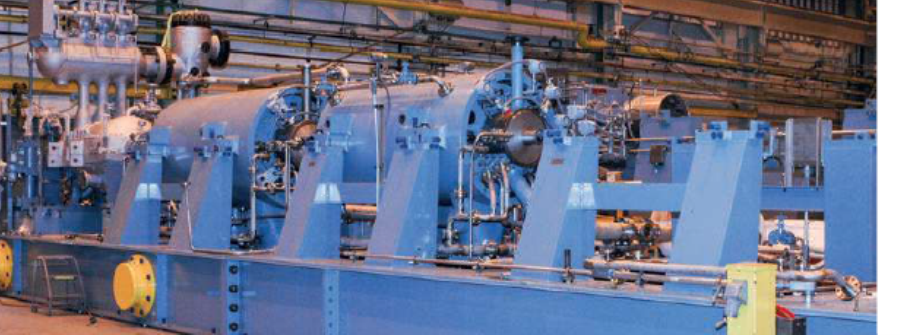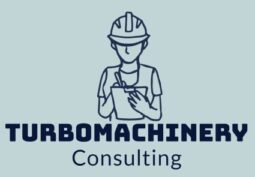OEM vs NON-OEM - SPARE PARTS - CENTRIFUGAL COMPRESSORS

LIMITS IN ENGINEERING & DESIGN TO APPLY IN OEM vs NON-OEM SPARE PARTS
When considering the use of OEM (Original Equipment Manufacturer) vs. non-OEM spare parts in centrifugal compressors, there are certain limits in engineering and design that should be taken into account to improve reliability, maintainability, availability, safety, and mitigate critical failures and environmental risks. Here are some key factors to consider:
Compatibility and Fit:
- OEM Parts: OEM spare parts are specifically designed and engineered by the compressor manufacturer to ensure compatibility and proper fit within the compressor system. They are manufactured to meet the original equipment specifications, tolerances, and performance requirements.
- Non-OEM Parts: Non-OEM spare parts may vary in terms of compatibility and fit. While some non-OEM parts are designed to be compatible with the compressor, there is a risk of improper fit, which can lead to reduced performance, increased wear, and potential safety hazards. Careful consideration and evaluation of the non-OEM parts’ compatibility with the specific compressor model are necessary.
Quality and Reliability:
- OEM Parts: OEM spare parts are typically manufactured to stringent quality standards and undergo rigorous testing and quality control processes. They are engineered using the manufacturer’s knowledge and expertise, ensuring reliability and performance consistency.
- Non-OEM Parts: Non-OEM spare parts can have varying levels of quality and reliability. It is crucial to carefully assess the reputation, certifications, and track record of the non-OEM supplier. Choosing reputable suppliers and thoroughly evaluating the quality and reliability of their parts can help mitigate risks associated with non-OEM parts.
Performance and Efficiency:
- OEM Parts: OEM spare parts are designed to maintain or improve the original performance and efficiency of the centrifugal compressor. They are optimized for the specific operating conditions, ensuring proper flow, pressure, and temperature characteristics.
- Non-OEM Parts: Non-OEM spare parts may not always provide the same level of performance and efficiency as OEM parts. Differences in design, material quality, or manufacturing processes can impact the overall performance of the compressor system. Careful evaluation and performance testing of non-OEM parts are essential to ensure they meet the required specifications.
Warranty and Support:
- OEM Parts: OEM spare parts typically come with a manufacturer’s warranty and support. The warranty terms and conditions cover defects in material or workmanship and provide access to technical expertise and assistance.
- Non-OEM Parts: Non-OEM spare parts may have limited or no warranty coverage. The support available for non-OEM parts depends on the supplier. It is important to assess the warranty and support options offered by the non-OEM supplier to ensure adequate coverage and assistance in case of issues.
Long-Term Availability:
- OEM Parts: OEM spare parts are generally available throughout the operational life of the compressor. The manufacturer maintains a supply chain and inventory management to ensure the availability of critical spare parts.
- Non-OEM Parts: Non-OEM spare parts may face challenges in long-term availability. The non-OEM supplier’s longevity, commitment to the market, and ability to maintain a consistent supply of parts should be evaluated to mitigate the risk of future unavailability.
When considering the use of non-OEM spare parts in centrifugal compressors, it is important to assess the specific risks and limitations associated with the particular part, supplier, and application. Engaging with equipment manufacturers, conducting thorough evaluations and testing, and collaborating with reputable suppliers can help mitigate the risks and ensure the reliability, maintainability, availability, safety, and environmental compliance of the centrifugal compressor system.
WHY, WHEN, WHERE, WHAT, WHICH, HOW TO APPLY OEM vs NON-OEM
To determine whether to use OEM (Original Equipment Manufacturer) or non-OEM spare parts in centrifugal compressors, and to effectively improve reliability, maintainability, availability, safety, and mitigate critical failures and environmental risks in the oil, gas, and petrochemical industries, the following considerations should be made:
WHY to Apply OEM or Non-OEM Spare Parts:
- OEM Parts: OEM spare parts are recommended when precise compatibility, performance, and warranty support from the equipment manufacturer are required. They are designed to meet original equipment specifications, ensuring reliability and safety.
- Non-OEM Parts: Non-OEM spare parts may be considered when cost savings are a priority, and when the supplier is reputable and can demonstrate quality, compatibility, and reliability comparable to OEM parts.
WHEN to Apply OEM or Non-OEM Spare Parts:
- Existing Plants: In existing plants, the decision to use OEM or non-OEM parts depends on factors such as equipment age, criticality, warranty coverage, and the availability of OEM parts. OEM parts are often preferred for critical or high-risk applications, while non-OEM parts can be suitable for non-critical systems or when OEM parts are not readily available.
- New Projects: In new projects, the choice between OEM and non-OEM parts should be determined during the design and procurement stages. Factors such as project specifications, budget, equipment warranties, and performance requirements should guide the decision-making process.
WHERE to Apply OEM or Non-OEM Spare Parts:
- Critical Systems: For critical systems where safety, reliability, and performance are paramount, OEM parts are generally recommended. These systems often include those involved in high-pressure or high-temperature operations, where failure can lead to severe consequences.
- Non-Critical Systems: Non-critical systems may present opportunities for the application of non-OEM spare parts, especially when cost savings are a priority and the supplier can demonstrate their quality and compatibility with the equipment.
WHAT to Consider in the Selection:
- Compatibility: Assess the compatibility of the spare part with the specific make and model of the centrifugal compressor. Evaluate dimensions, specifications, and performance characteristics to ensure proper fit and function.
- Quality and Reliability: Consider the track record, certifications, and reputation of the spare parts supplier. Evaluate their manufacturing processes, quality control procedures, and testing protocols to ensure the parts meet industry standards and provide reliable performance.
- Warranty and Support: Review the warranty coverage and support offered by the supplier. OEM parts typically come with manufacturer warranties and access to technical support, while non-OEM parts may have limited or no warranty coverage.
WHICH Parts to Select:
- Critical Components: Critical components that directly affect safety, performance, or reliability should be carefully evaluated. Consider using OEM parts for critical components to ensure they meet original equipment specifications and performance requirements.
- Non-Critical Components: Non-critical components that have minimal impact on safety and performance may present opportunities for the use of non-OEM parts, as long as the supplier can demonstrate their quality, compatibility, and reliability.
HOW to Apply OEM or Non-OEM Spare Parts:
- Evaluation and Testing: Conduct thorough evaluations and performance testing of non-OEM parts to ensure they meet the required specifications and performance standards. Compare their performance and compatibility with OEM parts before making a decision.
- Supplier Collaboration: Engage with reputable suppliers and collaborate closely with them during the selection and procurement process. Seek technical expertise and obtain assurances of quality, compatibility, and reliability from the supplier.
- Documentation and Tracking: Maintain accurate documentation of spare parts used in the centrifugal compressors. Keep records of part numbers, specifications, suppliers, and warranties to facilitate future maintenance and ensure traceability.

PROCEDURES, ACTIONS, STUDIES, MITIGATION, RECOMMENDATIONS TO APPLY IN SPARE PARTS ABOUT OEM vs NON-OEM
When considering the application of OEM (Original Equipment Manufacturer) vs. non-OEM spare parts in centrifugal compressors to improve reliability, maintainability, availability, safety, and mitigate critical failures and environmental risks in the oil, gas, and petrochemical industries, the following procedures, actions, studies, mitigation measures, and recommendations can be applied:
Procedure for Evaluating Spare Parts:
- Establish a comprehensive spare parts evaluation process that includes considerations for compatibility, quality, reliability, and performance.
- Define criteria for assessing the suitability of OEM and non-OEM parts, taking into account factors such as equipment specifications, criticality, and performance requirements.
Action Plan for Spare Parts Selection:
- Identify critical components that require OEM parts to ensure reliability, safety, and performance. Prioritize the use of OEM parts for these components.
- Conduct a cost-benefit analysis for non-critical components to determine the potential savings and evaluate the risks associated with using non-OEM parts.
- Engage with reputable suppliers, both OEM and non-OEM, to gather information, technical specifications, and performance data on spare parts.
Studies and Evaluations:
- Conduct comparative studies between OEM and non-OEM parts to assess their performance, compatibility, and reliability under various operating conditions.
- Perform failure mode and effects analysis (FMEA) and reliability analysis to identify critical failure modes and associated risks for each spare part option.
- Evaluate the impact of using non-OEM parts on system performance, maintenance practices, and safety procedures.
Mitigation Measures for Risk Management:
- Establish rigorous quality assurance and control processes for non-OEM parts, including inspections, testing, and certifications to ensure their compliance with industry standards.
- Implement thorough supplier qualification procedures to assess the reputation, track record, and capabilities of non-OEM suppliers.
- Develop robust maintenance and inspection plans specific to non-OEM parts to ensure they are properly installed, monitored, and maintained.
Recommendations for OEM and Non-OEM Parts Usage:
- Prioritize the use of OEM parts for critical and high-risk applications to ensure reliable performance and compliance with original equipment specifications.
- Consider using non-OEM parts for non-critical components after thorough evaluation and testing, ensuring they meet the required performance and safety standards.
- Maintain a balance between cost savings and risk mitigation when selecting non-OEM parts, taking into account factors such as part criticality, supplier reputation, and long-term availability.
Monitoring and Continuous Improvement:
- Implement a robust spare parts tracking system to monitor the performance and reliability of both OEM and non-OEM parts over time.
- Regularly review and update spare parts selection criteria based on lessons learned from equipment failures, industry best practices, and advancements in technology.
- Foster a culture of continuous improvement by encouraging feedback from operators, maintenance personnel, and suppliers to identify areas for optimization and enhancement.
It is important to note that specific procedures, actions, studies, mitigation measures, and recommendations may vary depending on the unique requirements, operating conditions, and regulations of each plant and project. Close collaboration between engineering, procurement, maintenance, and safety teams is crucial to ensure the appropriate selection and application of spare parts in centrifugal compressors, considering the reliability, maintainability, availability, safety, and environmental considerations in the oil, gas, and petrochemical industries.

